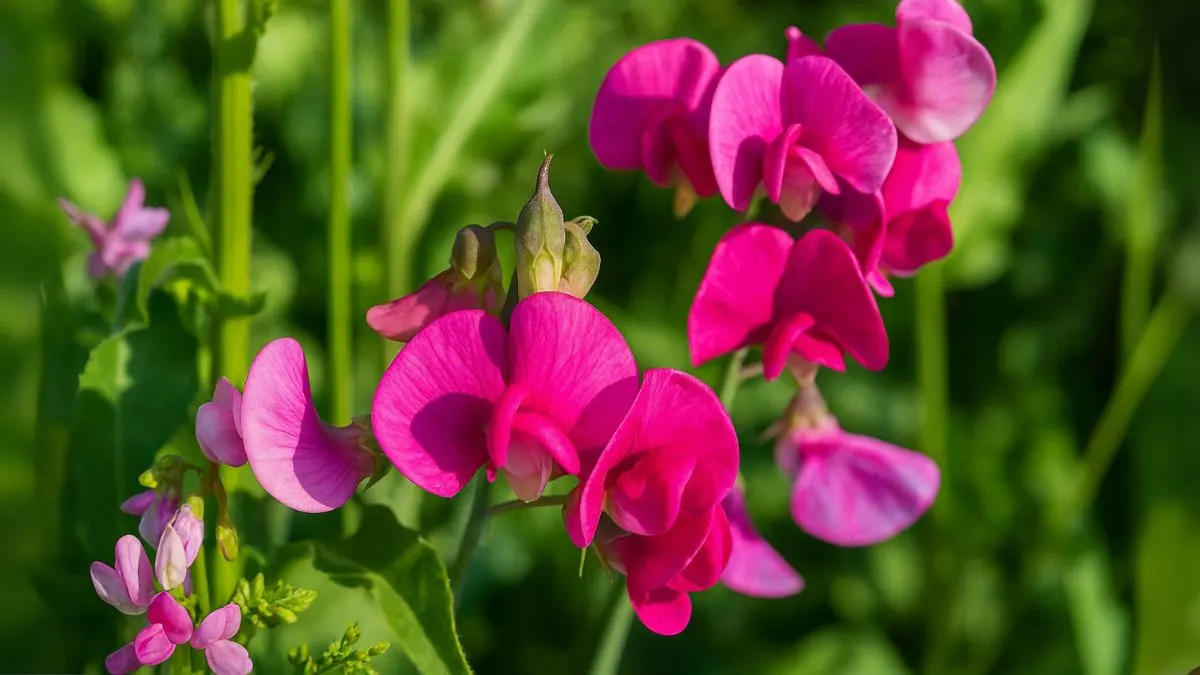Few flowers can match the romance and elegance of sweet peas. Their soft petals, enchanting fragrance, and climbing nature make them a favorite among gardeners. Whether you’re designing a cutting garden or adding color to your backyard fence, sweet peas are worth the effort.
But how do you make them thrive? It’s not just about scattering seeds. From sowing seeds in well-draining soil in early spring or fall, after soaking them overnight to providing the right temperature and location, there are proven steps to follow.
Why Choose Sweet Peas for Your Garden?

- They’re easy to grow, even for beginners.
- Known for their fragrance and cut-flower quality.
- Available in a wide range of colors.
- Perfect for trellises, fences, or containers.
Fun fact: Sweet peas grow best in cooler temperatures, ideally between 10–20°C, making them perfect for spring or fall gardens in Canada, the USA, and other temperate regions.
When and How to Plant Sweet Peas
Timing Matters
- Sow sweet peas in autumn if you live in warmer regions; this gives plants a head start.
- In colder regions, sow seeds in well-draining soil in early spring or fall, after soaking them overnight.
Soil Preparation
- Sweet peas need rich, well-drained soil.
- Add compost before planting to boost fertility.
- Maintain a pH between 6.0–7.5.
Also Read: The Secret Joy Behind Every Rainy Day
Sowing Technique
- Soak seeds overnight for faster germination.
- Plant seeds about 1 inch deep and 2–3 inches apart.
- Thin seedlings to 8–12 inches apart for better airflow.
Choosing the Best Spot
While sweet peas enjoy sunlight, it is better to plant them in a semi-shady spot where they’re protected from harsh midday rays.
- Full morning sun + afternoon shade is ideal.
- Avoid overly hot areas, as these flowers grow best in cooler temperatures, ideally between 10–20°C.
- Provide trellises, netting, or stakes to help them climb.
Watering and Care
- Water deeply once or twice a week.
- Mulch around the base to keep roots cool.
- Pinch out the growing tips of seedlings to encourage bushier growth.
Pro Tip: Early in my gardening journey, I skipped mulching and my sweet peas dried out quickly during a warm spell. Since then, I always mulch lightly—it makes a big difference in moisture retention.
Fertilization
- Use a balanced fertilizer every 2–3 weeks.
- Avoid high-nitrogen fertilizers, which encourage leaves instead of flowers.
- Compost tea or organic liquid fertilizer works wonderfully.
Also Read: Why Insectivorous Plants Are Nature’s Smartest Hunters
Supporting Sweet Peas
Thay are natural climbers. Without support, they’ll tangle and sprawl.
- Use bamboo stakes, trellises, or netting.
- Train vines gently as they grow.
- Regularly tie stems to supports for neat growth.
Common Problems and Solutions
Problem |
Cause |
Solution |
Poor germination |
Seeds not soaked or soil too wet |
Soak seeds overnight before planting |
Yellowing leaves |
Overwatering or poor drainage |
Improve soil drainage |
Fewer flowers, more leaves |
Excess nitrogen fertilizer |
Use low-nitrogen fertilizer |
Aphids and pests |
Common garden insects |
Neem oil spray or insecticidal soap |
Varieties of Sweet Peas to Try
- Spencer Varieties: Large, ruffled blooms. Great for cut flowers.
- Dwarf Varieties: Perfect for containers and small gardens.
- Heirloom Varieties: Known for strong fragrance and historical charm.
Personal Experience
The first time I planted sweet peas, I underestimated their climbing needs. They grew into a tangled mess, yet their fragrance was so rewarding that I decided to try again. The next season, I built a simple bamboo trellis, and the results were spectacular—lush blooms, long stems, and a constant supply of flowers for vases.
I also learned that sowing seeds in well-draining soil in early spring or fall, after soaking them overnight improves germination significantly. Now, it’s a ritual every year in my Canadian backyard.
Also Read: Clematis: The Climbing Vine That Gives You a Wall of Blooms
Quick Tips for Success
- Sow sweet peas in autumn if your climate allows—it gives the strongest plants.
- It is better to plant them in a semi-shady spot to protect them from harsh heat.
- Sweet peas grow best in cooler temperatures, ideally between 10–20°C—so time your sowing carefully.
- Deadhead flowers regularly to encourage more blooms.
- Use mulch to retain soil moisture.
Growing sweet peas is a joyful experience. From their charming blooms to their heavenly scent, they add instant beauty to any garden. With the right care, it will reward you with months of color and fragrance—whether you’re in Canada, the USA, or anywhere else in the world.
👉 Start small this season, and once you experience their magic, you’ll never skip planting sweet peas again.






